Without Pity: Ann Rule's Most Dangerous Killers Read online
Page 14
Donna Howard apparently tried every means she could think of to save her marriage. She prevailed upon Russ to go to an alcoholic treatment center. He went, but he began to drink again after he was back home. Feeling that his friends exacerbated his drinking problem, Donna put her foot down and barred them from her home, and that irritated Russ. She herself joined Al-Anon (the group for families of problem drinkers), and she talked almost daily with members of the group, seeking some way to help Russ stay sober. When nothing seemed to work she went so far as to consult an attorney about a divorce. But she changed her mind. She worried that she couldn’t support her daughters alone, and she really wanted them to have a father as well as a mother.
If there was one thing that the Howards were both concerned with, it was their daughters. The little girls were eight and ten, and Russ and Donna loved them.
Even so, his children were not enough to keep Russ Howard home much. Donna never knew where he was for sure. Once she was injured in a car accident, and nobody could find Russ for hours to tell him she had been hurt.
When Russ was in town he was a frequent patron at the bar at the Yakima VFW Club. The bartender there had been the attraction for a year or more. She was a cute little blonde with a sprinkling of freckles across the bridge of her nose and just the beginning edges of hardness. Her name was Sunny Riley,* and she was about a dozen years younger than Donna.
Sunny and Russ Howard had been involved in a sizzling affair for a year. Sunny liked the same characteristics in Russ that had drawn Donna to him twenty years earlier: he was fun, he was exciting, and he made her laugh. She wanted to marry him. But of course, he was already married. Sunny turned the screws a little. She simply told him that if he didn’t get a divorce, he’d better not expect her to wait around; she was going to date other men.
By December, 1974, Donna Howard could no longer hide the strain of living in a house torn apart. Here it was the Christmas season, and her family was living a sham. Russ was hardly ever home; he’d slacked off the alcohol treatment and gone on as before.
Donna had tried so hard to do whatever Russ seemed to want, hoping that they could get along better. One of the things he had wanted was to buy a new house. Donna hadn’t wanted to move, but she’d gone along with it. They bought a house on Tieton Drive, and they would be moving in January. It seemed ridiculous when the marriage was so shaky, but she thought a new house might shed a happier light on the marriage—kind of a geographical remedy to a seemingly insoluble situation.
In mid-December Russ got home very late one night, and he was drunk. An argument ensued, and he hauled off and belted Donna twice in the head, practically knocking her out. That scared her. When her head stopped spinning she called the sheriff’s office and filed a report. Donna told the officer responding that she was going to see her lawyer the next day, that she would be filing for divorce.
Russ hitting her was the deciding factor. Her lawyer was worried about Donna. He had advised her to file many times before, but Donna had always backed out. Now she was determined to divorce Russ and seek sole custody of her two daughters. She told Bobbi that she was resolute. “I was positive in my heart,” Bobbi remembered, “that she was going ahead and getting the divorce.”
Fay Moss suspected things had come to a breaking point, too. “Donna was always the kind that never complained. She was the one who would always go up to the rest of us, look us square in the eye, and say, ‘How are you? How are the kids?’ and she really wanted to know. But this one time in late December I said to her, ‘Donna, how are you, really?’ She just broke down and cried and responded, ‘Not good. Just not good.’”
Russ Howard was between the proverbial rock and a hard place. If he didn’t divorce Donna, Sunny was going to dump him. If Donna divorced him—as she was threatening to do—he might lose his kids, and the equity in their new home as well. Since the original down payment for the old house had come from Donna’s family, he suspected a judge would award Donna the new house.
Perhaps to punctuate that she, too, meant what she said, Sunny had broken up with Russ as 1974 turned into 1975. Both women in Russ’s life were fed up.
What he really wanted were his kids, the new house, and Sunny. On January 9, 1975, Russ Howard had a long talk with Sunny, and he confided an idea he had. She didn’t really believe him; she thought it was the liquor talking.
On that same January 9th Donna’s friend Fay Moss was visiting in Ellensburg. “I was talking to a friend who went to Yakima often, and I said, ‘Ellie, call Donna. She really needs a friend right now.’”
Fay remembered her phone conversation with Donna Howard in December, and it had left her with anxiety over her old friend. Donna had cried during that call, and Donna never cried. “She had told me that she was sorry that she hadn’t been able to make it over to Seattle to visit. Then she said, ‘I’m changing a few things in 1975. We’re moving to Selah on January first. This should prove very interesting. I’ll let you know more.’”
Fay Moss didn’t think the real changes in Donna’s life had anything to do with the new house. She knew Donna, and Donna was talking about something that would mean far more upheaval in her life than simply changing addresses. It had something to do with her marriage. Fay worried about Donna all day on January 9th, and she made up her mind to drive on down to Yakima and see her the next day. “But I didn’t. A winter storm blew in, and the roads were so bad that I turned around and came home. When I got home I learned that Donna was dead.”
Donna Howard was forty-two years old when she died on January 10, 1975. It happened so quickly; it was 9:27 on that bitter, icy morning in Yakima, Washington, when Russ found her. Emergency medical technicians pronounced her dead at 9:47.
How ironic that Donna Howard of all people should die in a stable, when she had loved horses since before she could walk. It just didn’t make sense. It would take almost a dozen years before it did.
Donna and Russ and the girls hadn’t quite finished moving everything out of the house on Galloway Road. Russ and Donna took their girls to school, and then they headed back to the old house. They passed some of their neighbors, and Russ and Donna waved.
Russ told the medics that they had put on a pot of coffee, and a little later he went into town to the hardware store to buy a mailbox for their new house. Then he stopped at a doughnut shop and picked up a dozen fresh doughnuts, explaining that he was taking them back to share with Donna. He talked to a number of people at the hardware store and the doughnut shop that morning. He had even written a check at the hardware store. Always talkative, Russ had seemed particularly gregarious.
His call for help came in just minutes before 9:30. A woman had been injured out on Route 8, Box 741. A fire department medic responded along with Yakima County Sheriff’s Office Patrolmen Jerry Hofsos and Ron Ward.
A worried Russ Howard led them out toward the loafing shed where the family’s two horses were kept. He explained that he and Donna were doing some last-minute moving and repairs. He had gone into town to get some supplies they needed, and he’d thought he would surprise Donna with some fresh doughnuts. But she hadn’t been in the house when he got back, nor had she responded to his shouts. He figured Donna was over at the neighbors’ house because she often visited there—but they hadn’t seen her either. He felt as if he had wasted precious minutes looking in the wrong place.
When Russ trudged through the deep snow out to the barn area he had found Donna. She lay in the loafing shed, just as she still was—except for the quilt, which he’d placed over her. The fire department medic knelt beside her and removed the quilt.
Donna Howard lay on her back with her left arm raised, her face turned to the left. Her right hand was pinned palm down beneath her right buttock. The medic felt for a pulse in the carotid artery in the neck. There was none. Donna Howard’s eyes were slightly open, but the pupils were already fixed and dilated. Her body was warm, but she was dead.
The immediate cause of death seemed to stem from some manner of head inju
ry; there was blood streaking Donna’s forehead, running back into her thick brown hair, which was virtually soaked with blood from some terrible head wound. Mere inches from her head one wall of the two-sided shed had thick scarlet stains, as if someone had taken a paint brush and daubed on two swaths. Almost directly opposite and a foot or so above Donna’s left elbow one swath was horizontal, the other vertical.
Donna wore bell-bottom jeans, rubber galoshes much too big for her feet (unzipped), a white sweater, a dark quilted jacket (open), and gloves. Her sweater was pulled up, exposing flesh at her waist. Her jeans were wrinkled oddly, too, pulled up slightly toward her knees. Her clothing looked almost as if someone had dragged her by her feet. Her galoshes nudged a salt block placed there earlier for her two horses.
“I found her like this,” Russ Howard explained. “I covered her with a quilt, and I called for the medics.” He had not moved her at all, he said, fearful of injuring her further.
The fire department and the responding deputies had, of course, called detectives for backup. In all cases of violent death—accidental or deliberate—detectives must investigate. Detective Sergeant Bob Langdale and Detective Ray Ochs responded to the scene to assist in the initial probe.
The sheriff’s men took pictures of the scene, but that was all. The barn and the house were a good distance apart. There was nothing in the house that seemed out of place. There wasn’t much to photograph. The cause of death seemed obvious: one of Donna Howard’s beloved horses had spooked and kicked her in the back of the head. She had lain there until Russ returned.
Pictures remaining in police files show a pretty woman with a lithe, perfect figure lying stretched out on the icy ground of the loafing shed. Over toward the slatted open side there is a plaid quilt and a Bekins Movers’ blanket. Beyond, a blizzard has kicked up, and the snow and sky meet in never-ending white.
Neighbors rushed to comfort the bereaved widower, who blamed himself for not being home when Donna needed him. “One of her horses must have kicked her,” he said. He couldn’t describe his feelings. “I don’t know how you describe something like that. I felt a combination of grief and rage, not knowing where to vent the rage.”
One of the first things Russ did after Donna’s body was removed was to contact Sunny Riley. He told her that Donna was dead, and he explained the events of the morning. Sunny was appalled, even terrified by what he related. But Sunny still loved Russ despite what he had told her. She kept her knowledge to herself.
Donna’s family was stunned by the news of the tragedy. That Donna should be killed by the very animal she loved was incomprehensible to them. She had been around horses her whole life; she talked to them in some unspoken language, and she trusted them more than she trusted most people. Moreover, she was no neophyte who didn’t know how to approach horses.
Dr. Richard Muzzall, the Yakima County coroner and a local surgeon who had gone to Ellensburg High School with Donna, performed her autopsy on January 11th. Although he was a board-certified surgeon, Muzzall had no special training in forensic pathology. He noted the back of the skull where it had been shattered and found the damage consistent with a blow from a horse’s hoof. He also found a second fracture of the skull, on the upper right side, a small ovoid (oval-shaped) depressed fracture. That puzzled him, given what Russ Howard had told him about the accident. Muzzall was not as sure about the cause of that wound as he was about the occipital fractures, and he made a note to go to the loafing shed and find out what had caused that.
When he went back to the horse shed Muzzall spotted three stacked railroad ties that made up part of the wall adjacent to where Donna Howard’s body was found. The top tie had been broken off raggedly at some time and had a sharp, jagged piece of wood protruding. That might have caused the small single fracture.
Muzzall deduced that Donna had been bending over, cleaning a horse’s hoof, and that she had been kicked by one of the horse’s other hooves, knocked headlong into the tie, and then propelled backward, her head sliding across the side of the shed, leaving the two bloody swipes. She had finally come to rest flat on her back with her legs stretched out. That scenario might explain how her skull was fractured both in the back and on the top, and why the smaller top fracture’s shape bore no resemblance to a horse’s foot size.
Muzzall’s postmortem report was only a page long, and the conclusion was death from multiple skull fractures due to horse kick. He noted the two areas of fracture and a third finding—a bruise on the webbing between the thumb and forefinger of the right hand. That bruise bore the imprint of the fabric of the glove Donna had worn. At the bottom of the autopsy report the summary diagnosis listed the fabric-pattern bruise as having been found on the left hand. A minor oversight, but one that would have been very important to a forensic pathologist.
A bruise in the webbing between the thumb and the forefinger is a classic defense wound. What part of a horse could have given Donna Howard such a bruise? And why hadn’t Muzzall proofread the autopsy report?
Outside of major metropolitan areas there are few trained forensic pathologists, and even the best sometimes disagree with one another on a close call. Indeed, in many rural and thinly populated areas coroners are not even required to be physicians. Muzzall had drawn his conclusions from the information available at the time and with the training that he had. Later several forensic pathologists would agree with him; others would not.
Neither Detectives Langdale and Ochs nor Yakima County Prosecuting Attorney Jeff Sullivan could come up with enough probable cause to arrest anyone for killing Donna Howard. It was, they were forced to conclude, a tragic and ironic accident.
Donna was buried, and Russ Howard and his daughters pulled their lives together, living in the new house. There wasn’t much insurance on Donna’s life—only $17,000—but Russ would receive social security benefits for the minor children.
Only Donna’s family could not accept the cause of death on the death certificate. Nothing added up. One might attribute the family’s doubts to grief and denial. And yet…
Bobbi Bennett sought—and found—refuge in her religion, but her growing faith only heightened her conviction that it was her duty to Donna to see that the real killer was punished. Bobbi knew how unhappy Donna had been, knew of her decision to divorce Russ, and knew that he had physically attacked her sister less than a month earlier—an attack so violent that Donna had been left almost unconscious. Bobbi Bennett was convinced that Russ Howard had killed Donna, but she had no idea in the world how to prove it.
With her family’s backing, Bobbi hired a private detective.
One of the startling pieces of intelligence the private investigator reported was that a young woman named Sunny Riley was living with Russ and his daughters. Donna was barely in her grave when Sunny moved in during February. Ostensibly she had been hired as a baby-sitter to care for the girls. Since Russ was a traveling seed salesman, it made sense that he had to have household help, but Donna’s family was suspicious. The private investigator pretended to be a real estate agent and talked with Sunny. There was no question that she was living in Russ’s home full-time. And she didn’t strike him as the baby-sitter type.
Four months later, in June—the month when Donna would have celebrated her forty-third birthday—Russ Howard and Sunny Riley were married, ending the arguments among townspeople over whether Sunny was a baby-sitter or a girlfriend.
There were reasons that the June wedding was not as romantic as it might have been. Sunny Riley was a woman tortured by conflicting emotions. She did still love Russ no matter what her suspicions were, and she had wanted to marry him for a long time. But she was frightened, too. Russ had confided things to her that she wished she had never heard. Whatever he might or might not have done, Sunny was absolutely convinced that she was just as responsible under the law as he was. Indeed, Russ often reminded her of her complicity, and she believed him when he said she would be in terrible trouble, too, if she ever revealed what he had told her.
/>
She had been afraid to marry him and afraid not to marry him. She had gone along with the wedding plans, she would say later, because she kept hoping something or someone would intervene before she and Russ made it to the altar. For his part, Russ was quite aware that a man’s wife cannot be forced to testify against him in a court of law.
No one intervened, of course, and the wedding went off without a hitch. Sunny did her best to block her fears out of her mind; at times she was able to completely submerge her doubts. Once they were married Russ didn’t seem to worry much at all about the law. He seemed quite secure. The coroner had agreed with his version of Donna’s death, and so had the prosecutor and the sheriff. Let the past bury the past.
But Donna’s sister Bobbi was not about to let that happen. She knew nothing about how to investigate a murder when she began her quest, but she read voraciously, and she soon gleaned a great deal of information. One afternoon while she was sitting in a beauty parlor chair she read about Thomas Noguchi, then chief medical examiner of Los Angeles County.
Bobbi Bennett got in touch with Noguchi and asked him and an associate to review Donna’s case. After doing that they agreed that it at least warranted a more complete autopsy.
Yakima County D.A. Jeff Sullivan agreed to an exhumation order, and a second postmortem examination was performed on Donna Howard’s body in late 1976. Forensic pathologist Dr. William Brady—then the Oregon state medical examiner—performed the autopsy with Dr. Bob Bucklin, an ex-assistant medical examiner for Los Angeles County, assisting. Dr. Muzzall, Jeff Sullivan, and Sergeant Langdale observed.
At length Dr. Bucklin concluded that he could not say with absolute medical certainty that the damage to her skull had not been caused by the kick of a horse. His inclination, however, was to disagree with Dr. Muzzall’s findings.
Dr. Brady prefaced his written report with the comment that pathological conclusions must take into account what was known to have been at the scene of a death—i.e., common sense combined with autopsy findings. A badly fractured skull and horses would tend to go together; unless other circumstances were known, Brady said he could not say what had caused the damage to Donna Howard’s skull.

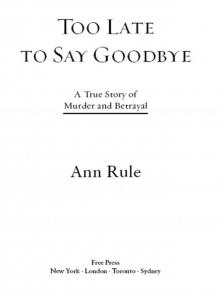 Too Late to Say Goodbye: A True Story of Murder and Betrayal
Too Late to Say Goodbye: A True Story of Murder and Betrayal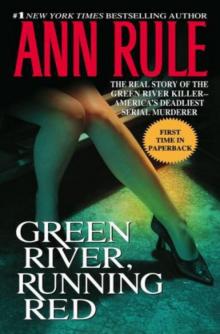 Green River, Running Red
Green River, Running Red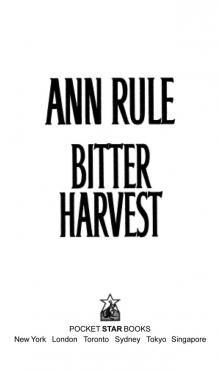 Bitter Harvest
Bitter Harvest Dead by Sunset: Perfect Husband, Perfect Killer?
Dead by Sunset: Perfect Husband, Perfect Killer?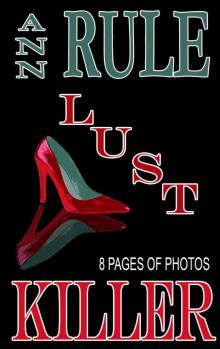 Lust Killer
Lust Killer And Never Let Her Go: Thomas Capano: The Deadly Seducer
And Never Let Her Go: Thomas Capano: The Deadly Seducer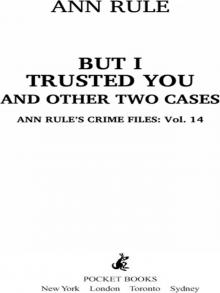 But I Trusted You and Other True Cases
But I Trusted You and Other True Cases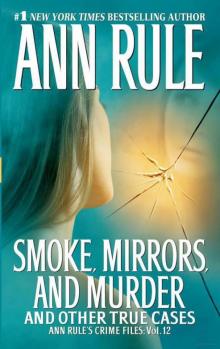 Smoke, Mirrors, and Murder and Other True Cases
Smoke, Mirrors, and Murder and Other True Cases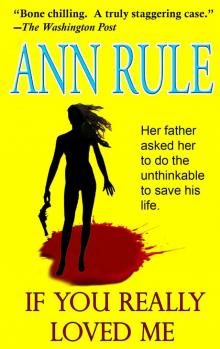 If You Really Loved Me
If You Really Loved Me Kiss Me, Kill Me and Other True Cases
Kiss Me, Kill Me and Other True Cases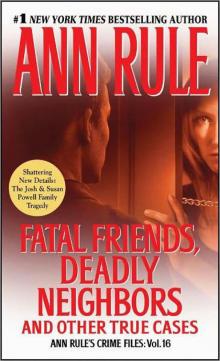 Fatal Friends, Deadly Neighbors and Other True Cases
Fatal Friends, Deadly Neighbors and Other True Cases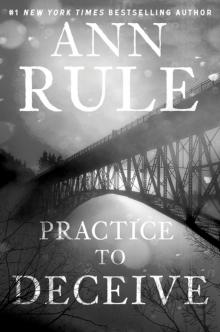 Practice to Deceive
Practice to Deceive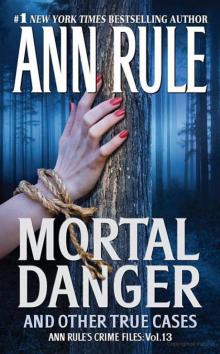 Mortal Danger and Other True Cases
Mortal Danger and Other True Cases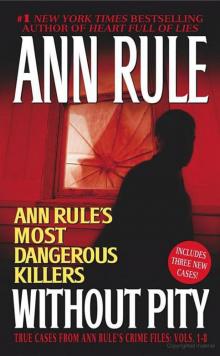 Without Pity: Ann Rule's Most Dangerous Killers
Without Pity: Ann Rule's Most Dangerous Killers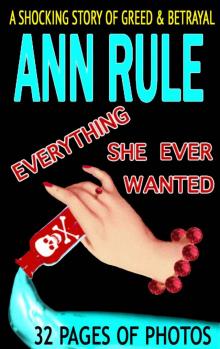 Everything She Ever Wanted
Everything She Ever Wanted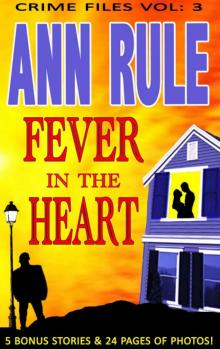 A Fever in the Heart and Other True Cases
A Fever in the Heart and Other True Cases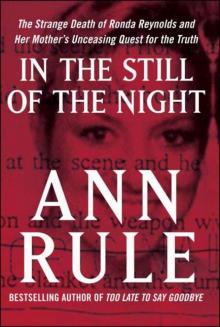 In the Still of the Night
In the Still of the Night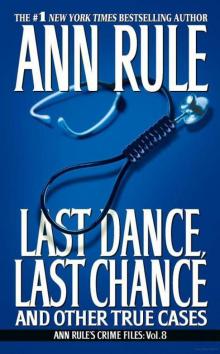 LAST DANCE, LAST CHANCE - and Other True Cases
LAST DANCE, LAST CHANCE - and Other True Cases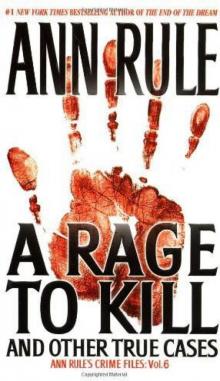 A Rage to Kill
A Rage to Kill The I-5 Killer
The I-5 Killer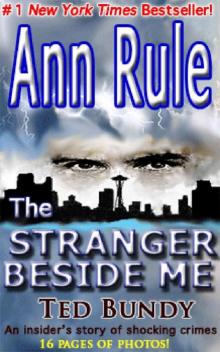 The Stranger Beside Me
The Stranger Beside Me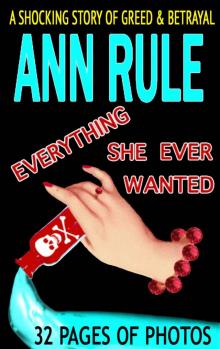 Everything She Ever Wanted: A True Story of Obsessive Love, Murder, and Betrayal
Everything She Ever Wanted: A True Story of Obsessive Love, Murder, and Betrayal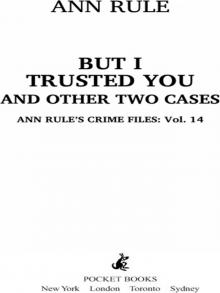 But I Trusted You
But I Trusted You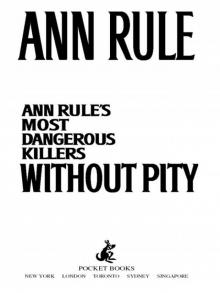 Without Pity
Without Pity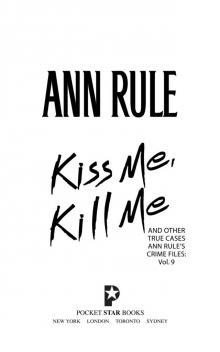 Kiss Me, Kill Me
Kiss Me, Kill Me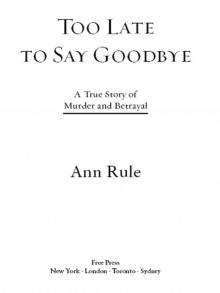 Too Late to Say Goodbye
Too Late to Say Goodbye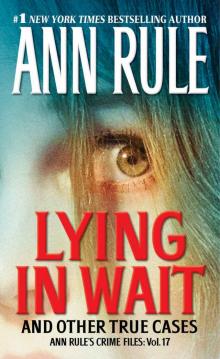 Lying in Wait
Lying in Wait Fatal Friends, Deadly Neighbors
Fatal Friends, Deadly Neighbors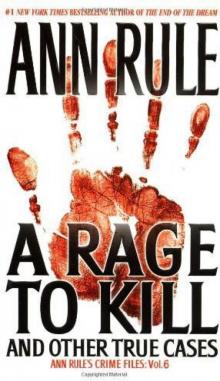 A Rage to Kill: And Other True Cases
A Rage to Kill: And Other True Cases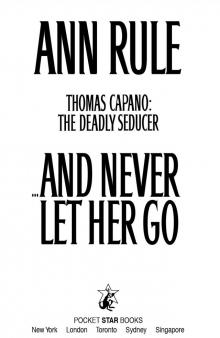 And Never Let Her Go
And Never Let Her Go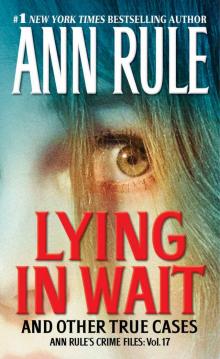 Lying in Wait Ann Rule's Crime Files Vol.17
Lying in Wait Ann Rule's Crime Files Vol.17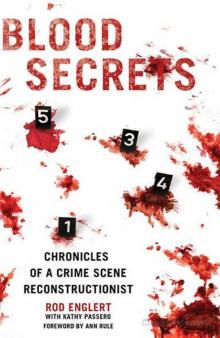 Blood Secrets: Chronicles of a Crime Scene Reconstructionist
Blood Secrets: Chronicles of a Crime Scene Reconstructionist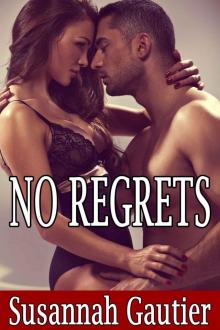 No Regrets
No Regrets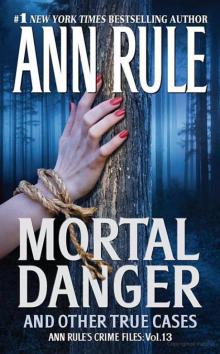 Mortal Danger
Mortal Danger But I Trusted You: Ann Rule's Crime Files #14
But I Trusted You: Ann Rule's Crime Files #14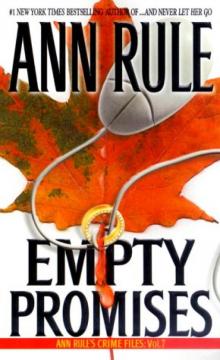 Empty Promises
Empty Promises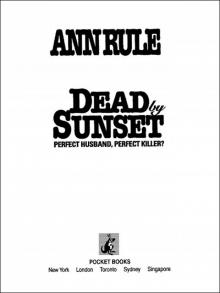 Dead by Sunset
Dead by Sunset Last Dance, Last Chance
Last Dance, Last Chance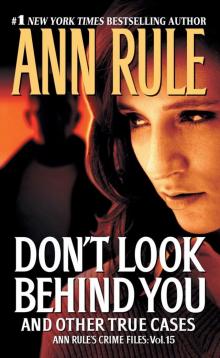 Don't Look Behind You
Don't Look Behind You